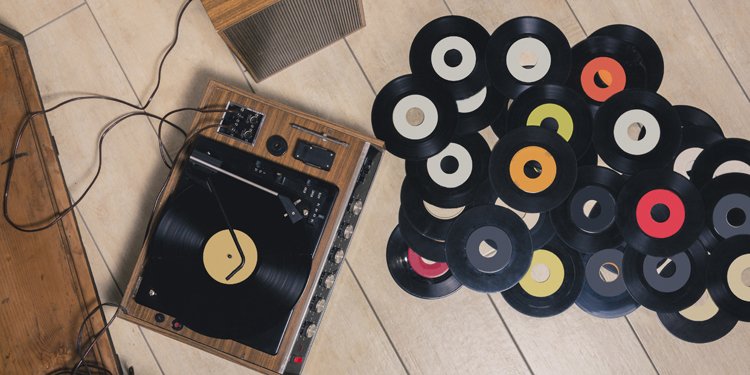Why Vinyl Sales Reflect The Experience Generation
As we continue to examine music & sound design, Diane Charlton looks at the opportunities offered by vinyl's growth
Popular wisdom has it that music has gone digital – but has it really? Sales of vinyl reached a 25-year high in 2016, increasing an impressive 53 per cent from 2015, and with the introduction of services such as Experience Vinyl, I wouldn’t be surprised if this continued.
.jpg)
Diane Charlton, COO of Once Upon A Time
The new US-based vinyl subscription service is based around the favourite records of the stars, and is set to launch in April, with Elton John as its first curator, followed by the likes of Quincy Jones, Talib Kweli, George Clinton and Sean Lennon.
This is not just the result of heartfelt sentiment of the 40- and 50-plus year olds, who might express their thoughts on Facebook with comments like, “Listening to Dark Side of The Moon on vinyl. I'm 17 again…”. The warmth of the medium is transferring across age groups.
A younger generation has adopted vinyl as an antidote to the streaming, own-nothing trend led by services like iTunes and Spotify. The sense of physical ownership is evidenced by the fact that a survey by ICM Research suggested that 15 per cent of physical music - whether vinyl, CD or, more rarely, tape - is bought with no intention of ever listening to it. It’s a nod of appreciation to the retro and part of experiencing the music, for the ‘experience generation’.
It’s a huge retail opportunity, too. The refreshed demand for turntables has led to the introduction of a whole new generation of products like the retro designed Crosley Cruiser, allowing retailers to reap the rewards. John Lewis reported 240 per cent growth in turntable sales in 2015, HMV sold one turntable a minute in the week running up to Christmas 2016 and they were Amazon’s biggest selling audio product in the same period. The demand is clearly there.
In a spin
The demand for vinyl is outstripping supply. The world’s remaining vinyl presses simple don’t have the capacity to meet current demand. It’s a direct victim of its own retro success.
The ageing machines still in action are struggling to keep pace, which has led to a hunt for refurbished old presses – taking them out of retirement in South Africa and Cuba and bringing them back to Europe or North America. One pressing plant in Germany even reclaimed a vinyl press from a museum.
One supplier in the Czech Republic, GZ, is producing 42,000 units a day and has begun building new presses for the first time in decades. As initiatives, such as the Hotel W expanding its ‘records to your room’ service, continue to pop-up, the pressure is on. As a result, any label releasing records has to plan far in advance.
Beautification
Playing alongside the release of music on vinyl is the rise of collectible extras making-up beautiful box sets, such as limited edition artist signed books, posters, CDs and one-off skin transfers.
The packaging concepts are created to be synonymous with the artist or album. Radiohead's The King of Limbs album packaging was styled around a free newspaper packed with 10" vinyl, CD's and art prints. Lead singer Thom Yorke generated publicity for the album by handing out free copies of a related newspaper outside the Rough Trade record shop on the day of release.

Old vs new artists
It’s not just established heritage bands that are re-releasing on vinyl. The release of a vinyl edition for artists like Rihanna is now de-rigueur, demonstrating the trend for physical ownership as a counteraction to streaming. However, in the UK the biggest vinyl album sales are dominated by older artists.

Fad or here to stay?
Current industry wisdom points to a sustainable and lasting upward trajectory for the sales of vinyl. The fact that half of consumers say they listened to an album online before buying a vinyl copy, according to an ICM poll, suggests that the two can exist in harmony, it is not just older collectors fuelling the rise, but young people too.
Retailers are also acknowledging the trend. As other music formats, such as CDs, decline, music retailer HMV has devoted more floor space to selling vinyl records, vinyl players and other related vinyl products. The beautification of records in stunning sleeves and increasing sales of turntables are gathering pace.
Yes, music has gone digital, but the desire for a beautiful physical product is real and set to continue rising.

shots 169 is our music and sound design special. To order a copy or subscribe, please click here.










